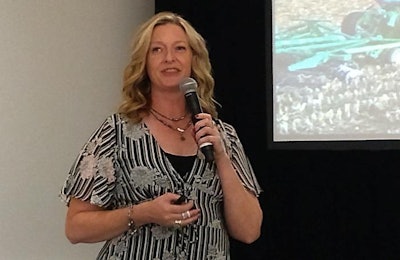
The notion that those who are involved in production agriculture must make tell their story before someone without that knowledge do is not new.
In fact, there is a word for sharing agriculture’s positive story: “Agvocating.”
But what many in the agriculture industry may not think about is that it isn’t just the people in urban areas that need to hear from farmers about the good they do for the world. People in rural areas need to hear it, too, according to Kim Bremmer of Ag Inspirations.
Bremmer talked about her agvocacy and encouraged others to join her while speaking on September 12 at the Liquid Feed Symposium in San Diego.
Special labels and misunderstanding of agriculture
Many food companies are well aware that there is a segment of the population that doesn’t understand the science behind agricultural and food production. Many tend to fear that food produced using traditional agricultural practices isn’t as safe or as good for the consumer, or the animals. That makes sense, Bremmer said, because: “Facts don’t sell. Fear sells much easier.”
Due to that fear, many consider products labeled as “organic,” “cage-free,” “vegetarian-fed” – for example -- superior. And many who prefer those products don’t have any reservations about paying a premium for them.
Food fears in rural areas
Products carrying those labels that cater to those with food fears, Bremmer said, are even sold (in rural areas, such as her own county, Clark County, Wisconsin.
She describes Clark County as the largest geographical county in the state, with a population of about 32,000 people. The number of dairy cattle in the county more than doubles that of the human population, she added.
To prove her point, she shared the story of a trip to a local grocery store. A woman ahead of her in the checkout line had a cart full of foods carrying an “organic” label.
The store employee running the cash register made a remark, expressing surprise about how much organic foods cost and asking the customer if it was worth it to pay the premium for those products.
“Without missing a beat, that woman didn’t even take a breath. She looked at that girl and said, ‘Absolutely. My husband and I, we don’t have a 401(k), we don’t have any retirement investments, because what we believe in is serving healthy food to our family today.’” Bremmer said. “That’s in my backyard. That discussion is happening in all of our backyards. It’s not just in the urban areas. This is all our rural areas as well. It’s our friends, our families, our neighbors.”


















